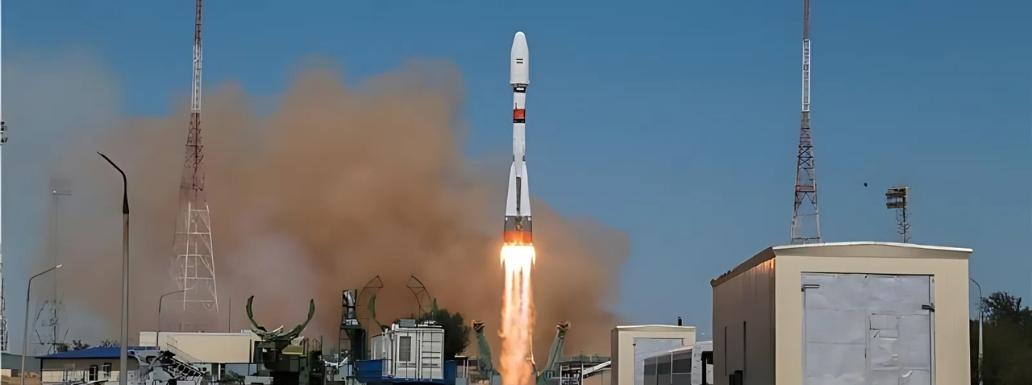Monday 17 November 2025
Russia Launches Soyuz Rocket with Iranian Satellites Amid Increased Collaboration Between Moscow and Tehran
Share

In a significant development, Russia has successfully launched a Soyuz rocket on Tuesday, November 5, 2024. It has been launched by Russias renowned space agency Roscosmos from Vostochny Cosmodrome (Russian Spaceport) located in Amur Oblast. This newly launched space rocket has been carrying a pair of two Iranian satellites and 53 small satellites from various countries.
This Soyuz 2.1b rocket also includes two primary Ionsfera-M satellites, weighing 430 kg. These are aimed at monitoring space weather around earth within a region between 50 to 400 miles above the planet where earth meets atmosphere. These will orbit around 830 kilometers above the Earths surface.
The satellites are a part of Russian mission to monitor space weather and study earths ionosphere (Earths atmosphere containing ions and electrons). According to NASA (National Aeronautics Space Agency), understanding the ionosphere is essential for space weather forecasting. It impacts satellite operations and global communication systems.
The Russian space agency, Roscosmos is planning to expand this system and include four Ionosfera-M Satellites into the rocket. The remaining two satellites are expected to be launched by 2025.
The recently launched Soyuz 2.1b is a modernized version of the Soyuz rocket family. It is known for its reliability and versatility. This is a medium-lift launch vehicle which is equipped with an upgraded third-stage engine named RD-0124. It has significantly improvised its performance as compared to its predecessor models.
Height: 46.3 meters (152 feet)
Diameter: 10.3 meters (33 feet 10 inches)
Mass: 312,000 kg (688,000 lbs.)
Payload to Low Earth Orbit (LEO): Up to 8,200 kg (18,100 lbs.)
Launch Sites: Baikonur, Plesetsk, Vostochny and previously from the Guiana Space Centre.
The spacecraft has been successfully launched with a mission to analyze the space weather and earths ionosphere. This mission highlights the space rockets capability to deploy multiple play loads into space efficiently.
The Kowsar satellite is one of the two Iranian satellite launched into orbit by a Russian 2.1b rocket launched on Tuesday, November 5, 2024. It is a high-resolution imaging satellite manufactured by Omidfaza, an Iranian private sector company. It is expected to operate for next three years.
Along with Kowsar Satellite, Hodhod, a communication satellite launch marks Irans first private satellites launched by Russia.
The previous satellites including Khayyam and Pars-1 satellite are the previous significant milestones in Irans space program. These were launched by Russia with additional 18 satellites. It was launched during the launch of Soyuz 2.1b rocket from Baikonur Cosmodrome in August 2022.
Additionally, the launch emphasized the growing cooperation between Moscow and Tehran. Both the nations are expanding their ties. This development comes after the Western nations and Ukraine accuse Iran of supplying drones and missiles to Russia to use in conflict with Ukraine.
However, the satellite launched by Iran with Russia are not the first one. It has been followed by many previous setbacks within Iran’s civilian space program. Before this, the country has faced five consecutive satellite failures with the Simorgh space program. This failure includes the 2019’s launchpad failure which claimed the lives of three researchers. In October 2019, a retaliatory Israeli strike targeted a military facility of Iranian military guards space program.
Newsletter
Stay up to date with all the latest News that affects you in politics, finance and more.